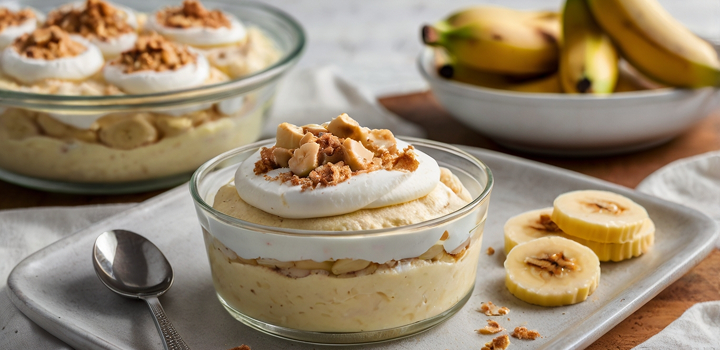Three Ways to Cook Gooseberries
Three Ways to Cook Gooseberries: A Guide by Arianne Nemna

Gooseberries often sit quietly on the shelf, overlooked by many home cooks who aren’t sure how to handle their tart, assertive flavor. But don’t let their size or sharpness fool you — when cooked right, these little berries become something truly special. Whether you’re aiming for a sweet jam, a comforting crumble, or a bold, savory sauce, gooseberries adapt beautifully in the kitchen. In this guide, I’ll walk you through three foundational ways to cook gooseberries, with step-by-step instructions, flavor tips, and easy adjustments so even a beginner can bring out the best in them. Let’s make these bright berries a regular part of your cooking repertoire.
Gooseberries
Gooseberries: Varieties and Flavors
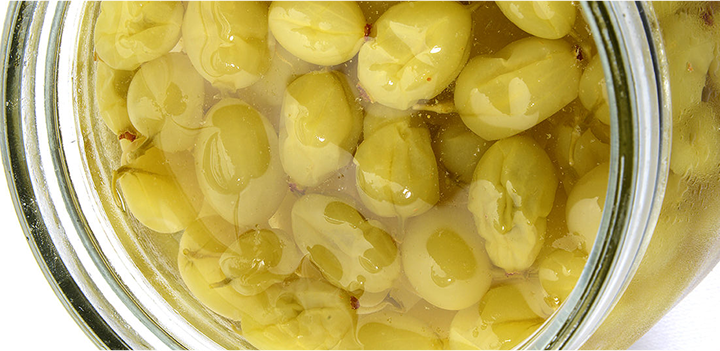
Gooseberries come in green, red, purple, or golden hues, with flavor profiles ranging from tart to mildly sweet. European varieties tend to be larger and milder, while American types are smaller and more acidic. The texture holds up well in cooking, especially when you want the fruit to retain some shape—perfect for jams, sauces, and crumbles.
Nutritional Benefits of Gooseberries
Despite their small size, gooseberries are nutritional powerhouses. They’re high in vitamin C, antioxidants, and fiber, which makes them beneficial for immune function and digestion. The low sugar content also makes them a smart ingredient for balanced desserts or savory sides.
Preparing Gooseberries for Cooking
How to Select and Store Fresh Gooseberries
When shopping, choose gooseberries that are firm to the touch with smooth, translucent skins. Avoid overly soft or shriveled ones. They can be refrigerated for up to two weeks in a breathable container. If you’re not cooking them right away, gooseberries also freeze well—just wash and dry them first before freezing in a single layer.
Cleaning and Prepping Techniques
To prep gooseberries for cooking, rinse them thoroughly under cool water. Each berry should be topped and tailed—removing the tiny stem and blossom ends with kitchen shears or a paring knife. This step is crucial, especially when making smooth-textured products like jam. For savory applications, cutting them in halves or quarters helps speed up cooking and infuses flavor more evenly.
Cooking Method 1. Gooseberry Jam
Ingredients and Equipment Needed
For a reliable batch of gooseberry jam, you’ll need fresh or frozen gooseberries, granulated sugar, lemon juice, and optionally, pectin if you want quicker setting. Equipment includes a wide saucepan or jam pan, wooden spoon, sterilized jars, and a food thermometer to ensure the right temperature.
| Ingredient | Amount | Notes |
| Gooseberries | 4 cups | Topped, tailed, and halved |
| Sugar | 3 cups | Adjust depending on tartness |
| Lemon juice | 2 tbsp | Helps with setting and flavor |
| Pectin (optional) | 1 packet | Use only if short-cooking |
Jam Preparation
Place prepared gooseberries in your saucepan over medium heat and cook until they begin to break down—this takes about 10 minutes. Add sugar and lemon juice. Stir constantly to prevent sticking. Continue to boil until the mixture reaches 220°F, which is the setting point. If you’re using pectin, follow the packet instructions for timing. When the jam thickens and a cold spoon test shows a wrinkle on the surface, it’s ready. Carefully ladle into sterilized jars and seal.
Tips for Perfect Consistency and Flavor
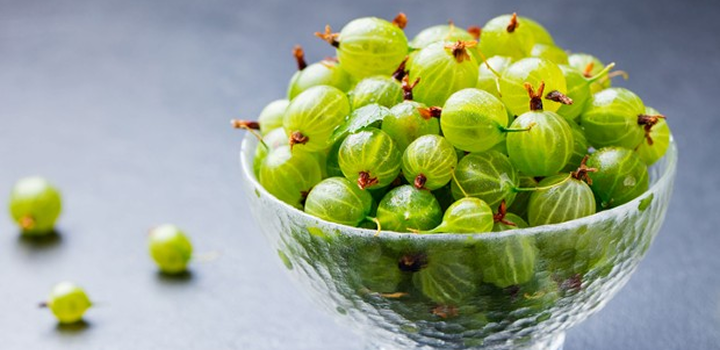
To avoid overly sweet jam, always taste your gooseberries before adding sugar. For a deeper flavor, allow the fruit and sugar to macerate together overnight in the fridge before cooking. Adding a pinch of salt enhances fruit complexity without making it salty. Avoid overcooking, as it can turn the jam gummy. If you prefer a smoother texture, blend the jam with an immersion blender just before reaching final temperature.
Cooking Method 2. Gooseberry Crumble
Choosing the Right Ingredients for Crumble
A good gooseberry crumble starts with ripe, tart gooseberries and a topping that complements their brightness. For the fruit base, you want enough sugar to balance the acidity, but not overwhelm the berry’s natural flavor. The crumble topping typically includes flour, butter, and a sweetener such as brown sugar or honey, with oats or chopped nuts added for extra crunch.
Use unsalted butter and plain flour as your base. Gooseberries can be lightly sweetened and tossed with a spoonful of cornstarch to help thicken the juices as they bake. A touch of vanilla or lemon zest can bring out a more nuanced flavor in the filling.
Baking Instructions for a Golden Topping
Preheat your oven to 375°F (190°C). Place the gooseberry mixture into a baking dish, spreading it evenly. Distribute the crumble topping loosely across the fruit—don’t press it down, as that will reduce crunch. Bake for 30–35 minutes or until the topping turns golden brown and the filling is bubbling at the edges.
Let the crumble rest for about 10–15 minutes after baking. This allows the filling to set slightly, making it easier to serve without turning watery on the plate.
Serving Suggestions and Variations
Gooseberry crumble is traditionally served warm, and pairs beautifully with cold elements like whipped cream, vanilla ice cream, or even plain Greek yogurt. To elevate the dish, try adding toasted almonds to the crumble or infusing the gooseberries with elderflower cordial before baking.
For variation, blend gooseberries with other fruits like raspberries or apples. The extra sweetness and color contrast well with gooseberries, especially when serving to guests who might find pure gooseberry too tart.
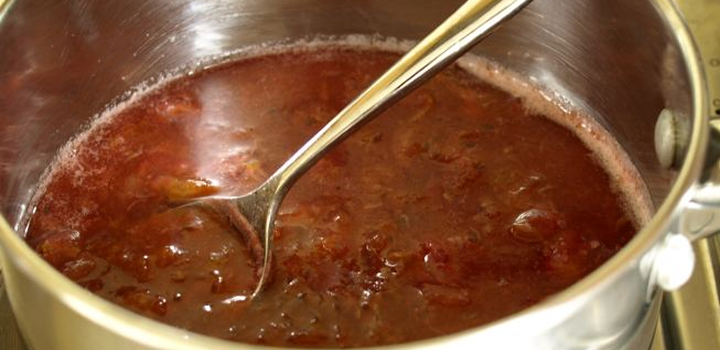
Cooking Method 3. Savory Gooseberry Sauce
Pairing Gooseberries with Meats and Fish
Gooseberries have a tartness that works exceptionally well with rich meats and oily fish. Classic pairings include roast pork, duck breast, grilled mackerel, and even lamb. The fruit’s acidity acts like a natural palate cleanser, cutting through fattiness and enhancing the main protein’s flavor.
When designing your sauce, keep the dish in mind—lighter sauces with fewer spices are ideal for fish, while meats can handle deeper caramelization and bolder flavors.
Cooking Techniques for Savory Sauces
Start by softening finely chopped shallots or onions in a small amount of oil or butter. Add fresh gooseberries and a splash of broth or dry white wine. Simmer over medium heat until the gooseberries begin to burst. Mash them gently with the back of a spoon, then let the liquid reduce until thickened.
Strain the sauce if you prefer a smooth texture, or leave it rustic with whole fruit pieces. Season with salt and a touch of sugar to balance the acidity. Finish with a dab of butter for gloss or a spoon of cream for richness.
Enhancing Flavor with Herbs and Spices
Savory gooseberry sauces come alive with herbs like rosemary, thyme, and sage. For brighter sauces, parsley or mint can add freshness. Spices like white pepper or mustard seed can deepen the profile, while bay leaf adds a subtle backdrop during reduction.
Avoid overcomplicating the sauce—two or three added elements are enough. Let the gooseberries take the spotlight while the herbs and spices act as subtle enhancers.
Additional Gooseberry Recipes to Explore
Gooseberry Fool: A Classic British Dessert
Gooseberry fool is one of the oldest English desserts and perhaps one of the easiest to prepare. The dish blends sweetened, stewed gooseberries with whipped cream to create a light, tangy mousse. To make it, cook the berries with a little sugar until soft and bursting. Cool the mixture fully before folding it gently into softly whipped cream.
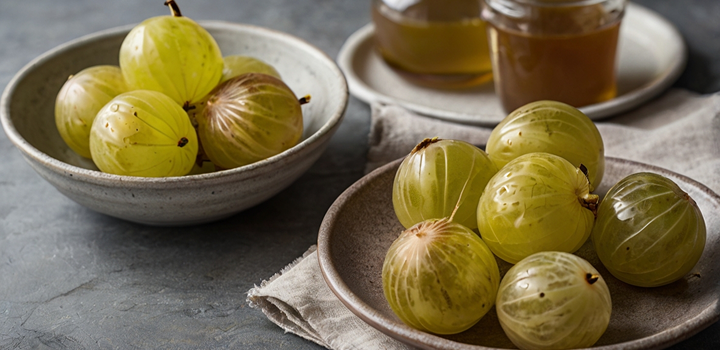
You can adjust the sugar depending on the tartness of the fruit. Some recipes include a spoonful of custard or Greek yogurt for extra body. It’s best served chilled, in glasses, as a refreshing end to a summer meal.
Gooseberry Chutney: A Tangy Condiment
Gooseberry chutney offers a savory-sweet punch that pairs well with cold meats, cheese boards, or curries. To make it, cook gooseberries with vinegar, onions, ginger, garlic, and spices like mustard seeds and cumin. Brown sugar helps balance the tartness, while the slow simmering creates a jammy, preserve-like texture.
Once made, let the chutney mature in sterilized jars for at least a week. The flavors deepen over time, becoming more rounded and mellow.
Gooseberry Compote: A Versatile Topping
A compote is simply fruit cooked gently with sugar, and gooseberries lend themselves well to this technique. In a saucepan, combine gooseberries with a touch of lemon juice, sugar, and optional spices like cinnamon or star anise. Simmer until the berries just begin to soften but still hold their shape.
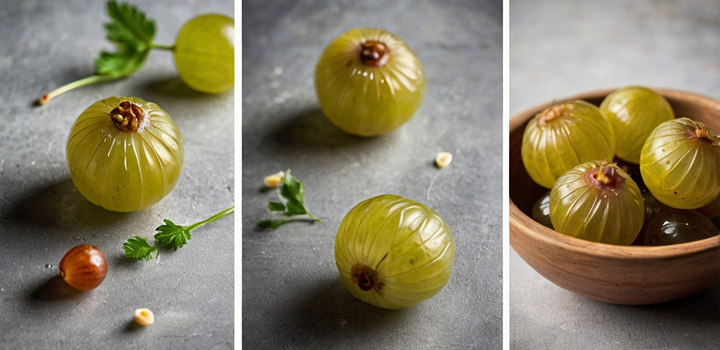
This compote can be spooned over pancakes, waffles, porridge, yogurt, or even used as a layer in trifles. Unlike jam, it’s not meant to set, so it remains looser and brighter in flavor.
15+ Frequently Asked Questions
What do gooseberries taste like?
Gooseberries are tart and tangy, with some varieties being sweeter than others. Their flavor can resemble sour grapes or kiwi, depending on ripeness.
Are green and red gooseberries the same?
They are different cultivars. Green gooseberries are typically more tart, while red ones are sweeter and often used in desserts.
Do I need to peel gooseberries before cooking?
No, the skin softens during cooking and adds texture and color. Just trim the stems and tails before use.
Can I freeze fresh gooseberries?
Yes, wash and dry them, then freeze on a tray before transferring to bags. They store well for up to a year.
How do I thicken gooseberry jam?
Gooseberries naturally contain pectin, so they thicken well when boiled with sugar. For extra firmness, add lemon juice or a bit of pectin powder.
Is gooseberry fool safe to make ahead?
Yes, it can be refrigerated for up to a day, but the cream may start to deflate. For best texture, assemble just before serving.
Can I reduce the sugar in gooseberry desserts?
Yes, but reducing it too much may affect texture and preservation. Taste your fruit first and adjust as needed.
What meats pair best with gooseberry sauce?
Rich or fatty meats like pork, duck, and lamb balance well with gooseberry’s acidity. It’s also great with grilled mackerel or salmon.
Can gooseberries be eaten raw?
Yes, though they’re very tart. Many people prefer them cooked or sweetened.
How long should gooseberry chutney be stored?
For best flavor, store it sealed for 1–2 weeks before opening. It lasts up to 3 months in the fridge once opened.
What’s the difference between compote and jam?
Compote is looser and less sweet, meant for immediate use, while jam is cooked longer and preserved for storage.
Can I make a savory gooseberry pie?
Yes, gooseberries pair well with onion, thyme, and mild cheeses in a savory galette or hand pie.
Do I need to remove seeds from gooseberries?
No, the seeds are edible and small. Cooking softens them further, so removal isn’t necessary.
Why is my gooseberry jam too runny?
It likely wasn’t boiled long enough to reach the setting point. You can reboil with a bit more sugar or pectin.
How do I know when gooseberries are ripe?
They should be slightly soft to the touch and have a translucent quality. Taste for sweetness if unsure.
